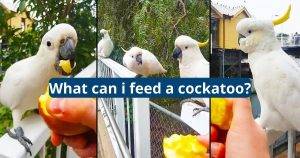Why Do Cockatoos Dance?

A cockatoo’s dancing behaviour can be triggered by a variety of things. It can come from excitement, happiness, or simply because they feel like dancing. The sulphur-crested cockatoo Snowball rose to fame after he bopped his head to the Backstreet Boys song “Everybody.” Now a Tufts study has shown that parrots, like humans, can anticipate and move to music’s beat.
Excitement
A decade ago, a cockatoo named Snowball shot to Internet fame over a video of him dancing to Backstreet Boys. But he wasn’t just imitating his owner, neurobiologist Aniruddh Patel from Tufts University discovered; the cockatoo was actually able to match his movements to music’s beat.
When cockatoos hear music with a steady rhythm, they bounce and bob their heads in time with it. They may also raise the crest of feathers on top of their head or spread their wings. This dance can be an expression of joy and excitement.
To investigate, Patel’s team filmed Snowball as he moved to Billy Idol and other hits. The cockatoo was even able to keep up with changes in the music’s tempo, and over time, he invented 14 different dance moves of his own.

Happiness
Cockatoos dance to show their caretakers that they are happy. They often dance to a particular type of music that makes them excited. If they see you enjoying the music and dancing, they will copy you, too. This is an excellent way for them to get the attention they crave.
A sulfur-crested cockatoo named Snowball gained worldwide fame after videos of him head-bobbing and foot-tapping to Backstreet Boys songs were posted online. Neurobiologist Aniruddh Patel was fascinated to find that the bird could match his movements to a beat, just like humans do.
When a male cockatoo hears music with a strong beat, they may raise their crest feathers or spread their wings to show off to potential mates. They also may puff out their feathers, crouch on one foot, or half-close their eyes to show that they are relaxed and content. These gestures are similar to the facial ruffling that some species of birds do when they are in a loving mood.

Instinct
A cockatoo’s tendency to dance in tune with the beat of music can be driven by instinct. It’s a way to show off for their caretaker, attracting attention and playtime. The cockatoo’s movements may include head bobs, wings flapping, foot stomping, body swaying, and synchronized hopping.
More than a decade ago, a Tufts psychology professor named Aniruddh Patel captured the world’s attention when he uploaded a YouTube video of his sulphur-crested cockatoo, Snowball, bobbing to the Backstreet Boys song “Everybody.” This was the first time that an animal had been shown to keep a beat to music.
Patel’s new study in the journal Current Biology shows that cockatoos can learn a variety of different dance moves, just like humans do. Snowball was able to adjust his dancing to the rhythm of various songs with varying tempos. He also incorporated facial feather ruffling, a common sign of positive emotion and relaxation. This is a sign that he enjoys his owner’s company and wants to be close to them.

Entertainment
When you dance in front of your cockatoo, it can inspire it to mimic your movements and incorporate them into its own dancing routine. You can also encourage your pet to dance by providing visual stimuli such as colourful toys or moving objects.
A cockatoo’s facial feather ruffling is an indicator of positive emotion and a relaxed state. This gesture can indicate that your bird likes you and enjoys being around you.
In 2009, a cockatoo named Snowball became famous for its ability to rock out to Backstreet Boys songs on YouTube. A neurobiologist, Aniruddh Patel, investigated Snowball’s talents and found that the sulfur-crested cockatoo can keep pace with music and adapt to changes in tempo.
Researchers have since discovered that Snowball has a remarkable ability to choreograph 14 different fly dance moves on his own, and that spontaneity isn’t something reserved solely for human dancers. The findings, published in Current Biology, may challenge the idea that humans have many unique abilities that animals lack.





